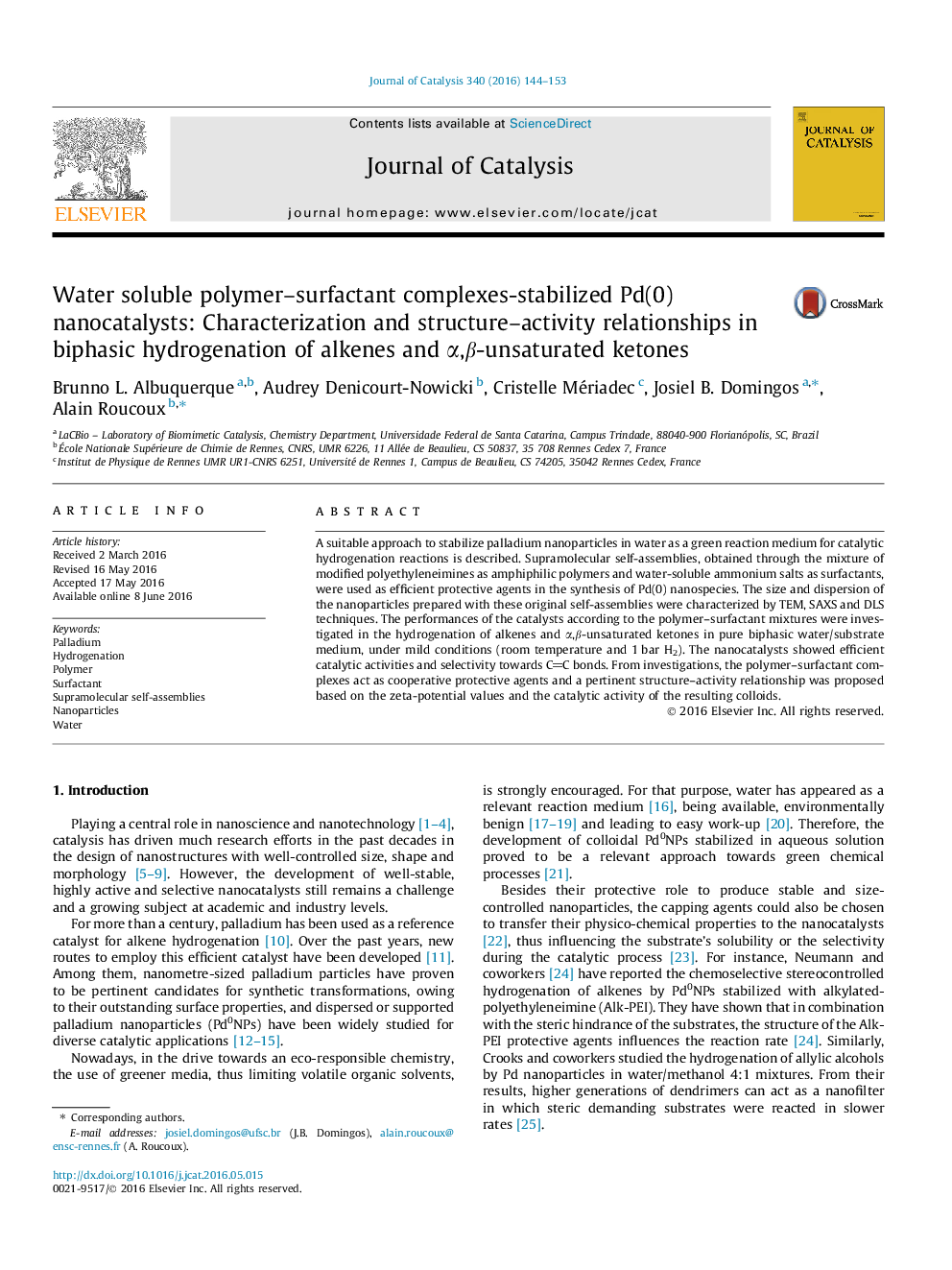| Article ID | Journal | Published Year | Pages | File Type |
|---|---|---|---|---|
| 60516 | Journal of Catalysis | 2016 | 10 Pages |
•Supramolecular self-assemblies developed for the synthesis of Pd nanoparticles.•The physico-chemical properties were modulated with polymer–surfactant assemblies.•Selective hydrogenation of α,β-unsaturated ketones was obtained in water.•Higher TOFs were achieved using surfactant-rich mixtures.•Correlation of the zeta-potential values with the catalytic activities was demonstrated.
A suitable approach to stabilize palladium nanoparticles in water as a green reaction medium for catalytic hydrogenation reactions is described. Supramolecular self-assemblies, obtained through the mixture of modified polyethyleneimines as amphiphilic polymers and water-soluble ammonium salts as surfactants, were used as efficient protective agents in the synthesis of Pd(0) nanospecies. The size and dispersion of the nanoparticles prepared with these original self-assemblies were characterized by TEM, SAXS and DLS techniques. The performances of the catalysts according to the polymer–surfactant mixtures were investigated in the hydrogenation of alkenes and α,β-unsaturated ketones in pure biphasic water/substrate medium, under mild conditions (room temperature and 1 bar H2). The nanocatalysts showed efficient catalytic activities and selectivity towards CC bonds. From investigations, the polymer–surfactant complexes act as cooperative protective agents and a pertinent structure–activity relationship was proposed based on the zeta-potential values and the catalytic activity of the resulting colloids.
Graphical abstractFigure optionsDownload full-size imageDownload high-quality image (177 K)Download as PowerPoint slide
